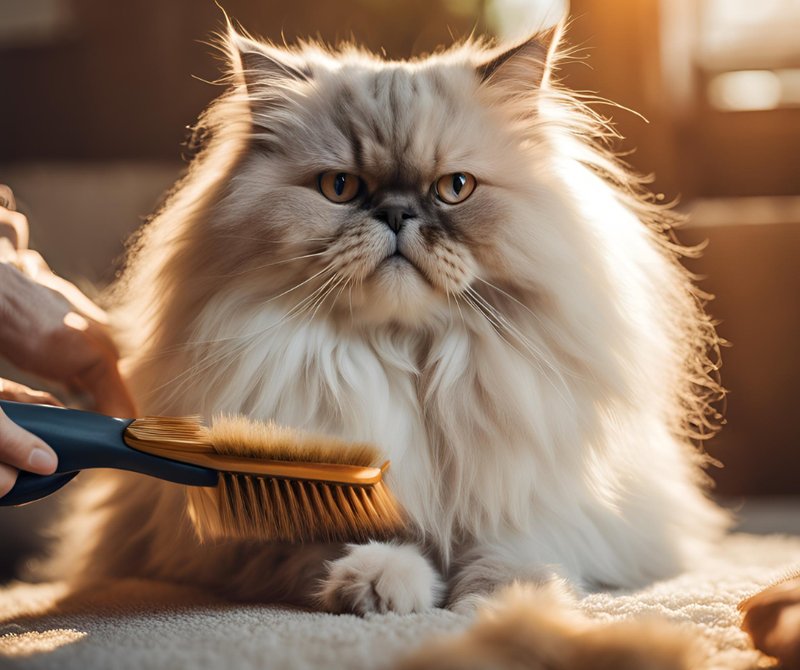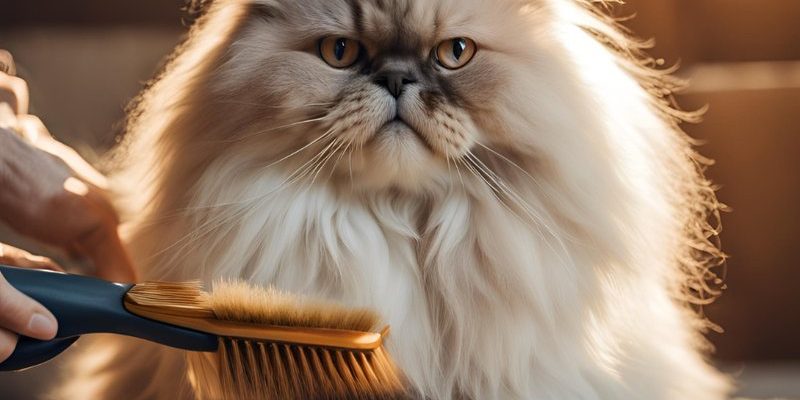
Caring for a Persian cat can sometimes feel overwhelming, especially if you’re new to the breed. But don’t worry! With a little patience and the right knowledge, you can ensure your furry friend thrives in your home. So, grab a cup of coffee, and let’s dive into how to keep your Persian cat happy and healthy.
Understanding Persian Cats
Persian cats are a breed renowned for their elegance and charm. They’re known for their gentle disposition and affectionate nature. However, their stunning coats require diligent grooming. Grooming is not just about keeping them looking fabulous; it’s crucial for their health, too. Their long fur can easily develop mats and tangles, which can lead to skin problems if not addressed.
These cats also tend to be a bit laid-back. They enjoy lounging around and are often content to be cuddled up next to you on the couch. But don’t mistake their calmness for lack of activity; they still enjoy playful moments. Understanding their temperament can help you create a caring environment that nurtures both their physical and emotional needs.
Grooming: Keeping That Coat Gorgeous
Grooming a Persian cat is a daily ritual that can become a bonding experience. Regular brushing helps prevent tangles and mats. It’s not just about looks; it removes loose fur, reduces shedding, and helps keep their skin healthy. Aim to brush your Persian’s coat at least once a day. Here’s how to make it fun and effective:
- Choose the Right Tools: Use a wide-toothed comb to detangle and a slicker brush to smooth out the fur. This combination works wonders.
- Establish a Routine: Pick a time when your cat is calm—maybe after a nap. This way, they will be more relaxed, making the process smoother.
- Be Gentle: Always brush gently to avoid pulling on their skin. If you encounter a knot, use your fingers to work it out carefully.
Additionally, don’t forget about bathing your Persian cat every few weeks. This helps keep their coat clean and can reduce the amount of allergens in your home. Just remember to use a cat-friendly shampoo!
Feeding Your Persian: Nutrition Basics
What you feed your Persian cat plays a crucial role in their overall health. These cats have specific dietary needs, so it’s essential to choose food that meets their requirements. Look for options that are high in protein and low in carbohydrates. Wet food can be especially beneficial for Persians, as it helps maintain hydration and can appeal to their taste.
When deciding on a feeding schedule, consider the following:
- Age Matters: Kittens have different nutritional needs compared to adult cats. Make sure you’re feeding an age-appropriate diet.
- Portion Control: Overfeeding can lead to obesity, which is a common issue in Persians. Be mindful of portion sizes and stick to a routine.
- Fresh Water: Always provide clean, fresh water. Some cats prefer running water, so consider a cat water fountain.
You might also wonder about treats. It’s okay to give them occasionally, but be sure they’re healthy options. Your vet can recommend safe treats that won’t upset their diet.
Creating a Comfortable Environment
A Persian cat thrives in a loving and comfortable environment. They appreciate quiet spaces where they can retreat and feel secure. Here are some tips to create the perfect setting for your furry friend:
- Cozy Sleeping Areas: Provide soft beds or blankets in sunny spots. Persian cats love to be warm, so consider heated beds during colder months.
- Safe Play Zones: Create areas where they can play safely. Cat trees or scratching posts are excellent for keeping their nails trimmed and their muscles active.
- Minimize Stress: Persians are sensitive to loud noises and sudden changes. Keep their environment calm by avoiding abrupt changes and introducing new elements gradually.
Remember, a happy cat is a healthy cat! Creating a comfortable space can significantly reduce stress and anxiety for your Persian.
Regular Vet Visits: Health Checkups
Just like humans, Persian cats need regular checkups to stay healthy. These visits help catch any potential health issues early. Persians are prone to certain conditions, such as respiratory issues due to their flat faces, so regular vet visits can be a lifesaver.
During these checkups, your vet will:
- Perform Health Screenings: They’ll look for common issues related to the breed, including dental problems and heart concerns.
- Vaccinate: Make sure to keep your cat’s vaccinations up to date for their protection.
- Parasite Control: Discuss flea and tick prevention, as well as deworming options.
You might feel overwhelmed at the thought of vet visits, but they’re crucial for your Persian’s well-being. Remember to take note of any changes in your cat’s behavior or appearance and share these with your vet.
Common Issues: What to Watch For
Caring for a Persian cat also means being aware of some common issues they may face. It’s a good idea to keep an eye out for these signs:
- Overheating: Because of their thick fur, Persians can easily get too hot. Watch for signs of weakness or excessive panting.
- Eye Discharge: They can be prone to tear staining. Regularly wipe their eyes with a soft, damp cloth to prevent buildup.
- Behavior Changes: Any sudden change in behavior can indicate a problem. If your cat seems withdrawn or irritable, consult your vet.
Staying vigilant about these issues can help you catch problems before they become serious.
Caring for a Persian cat can be a delightful journey filled with love, laughter, and the occasional challenge. By investing time in grooming, providing a balanced diet, and creating a nurturing environment, you’ll set the stage for a happy and healthy life with your feline friend. Remember, every Persian is unique, and understanding their individual needs will create a bond that lasts a lifetime.
So take it one day at a time—before you know it, you’ll master the art of caring for your beautiful Persian, and you’ll both revel in the happiness that comes from a loving partnership. Enjoy the journey with your fluffy companion!

